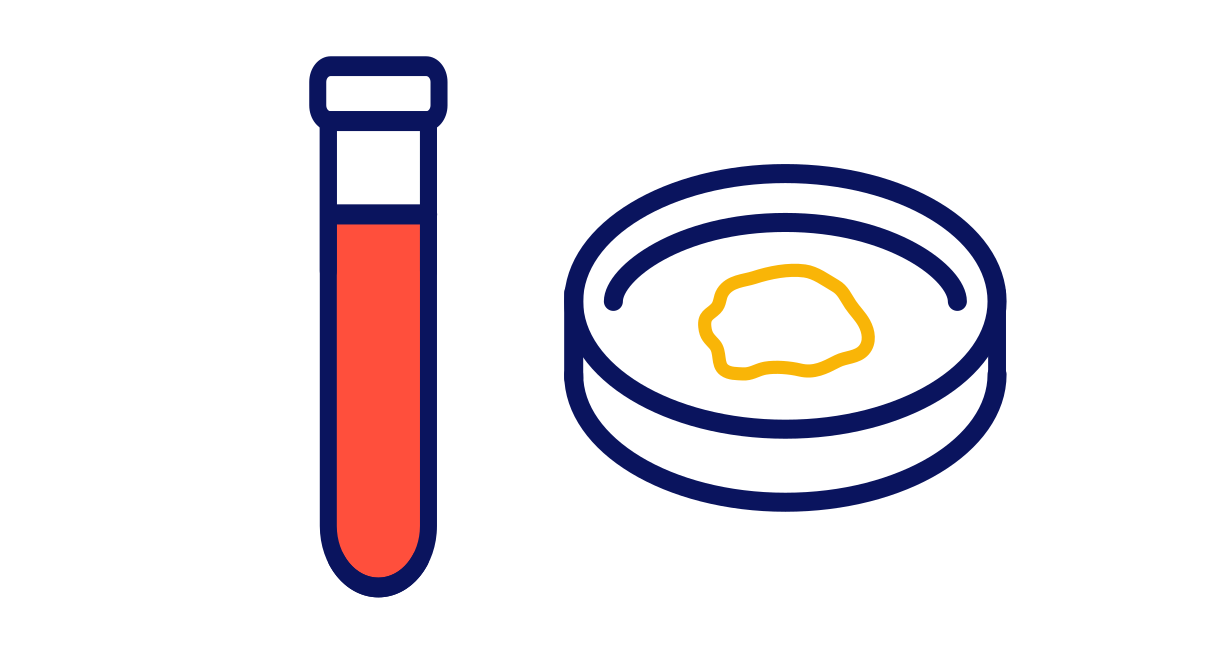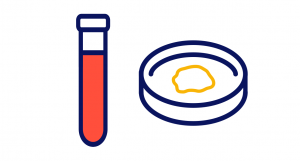Human biological samples are biological materials that are obtained from living or deceased human subjects. There are many different types of biological samples that are commonly used as part of routine clinical care (ie. diagnosis, prognosis and monitoring), and/or in life science R&D (academic and commercial).
In life science research, biological samples are a critical resource, with many important uses. In this post, we will summarize the main types of biological samples (biofluids, tissue, cells and other), and give a few examples of where they are used in life science research and product development.
1. Biofluids
Biofluids is the short form of biological fluids. These fluids can be obtained from the human body via a number of different methods: excreted (eg. urine), secreted (eg. breast milk) or extracted (eg. blood). Here is a list of common biofluid samples types that are used in research:
- Blood
- Bile
- Bone Marrow Aspirate
- Breast Milk
- Cerebral Spinal Fluid (CSF)
- Plasma
- Saliva
- Serum
- Sputum
- Stool
- Swabs (oral, nasal, vaginal fluids)
- Synovial Fluid
- Urine
Biofluid Use in Research
Here are a few examples of where different types of biofluid samples are needed in life science research and product development:
Non-Invasive Prenatal Testing (NIPT) – NIPT is a non-invasive method used to screen a developing fetus for specific chromosomal and genetic abnormalities (eg. trisomy 21 – Down syndrome). These tests use a plasma sample collected from the mother during pregnancy. In order to develop and optimize these types of tests, researchers require whole blood/plasma samples from pregnant and non-pregnant women.
COVID-19 Diagnostic Testing – The tests used for diagnosing COVID-19 commonly use a nasal swab. In order to develop, optimize and validate these tests, researchers require a substantial number of swab samples from subjects with suspected COVID-19 (symptomatic and asymptomatic), as well as subjects without known exposure to COVID-19.
Liquid Biopsy Tests – One of the emerging non-invasive methods for cancer diagnosis is to use a simple blood test. The tests typically evaluate either circulating tumor cells (CTCs) or circulating tumor DNA (ctDNA). Researchers require whole blood or plasma samples from subjects diagnosed with cancer in order to develop and validate these tests.
2. Tissue
Tissue samples are samples collected from a specific organ. They are collected either through a biopsy or via a surgical procedure (surgical resection). Here is a list of common tissue sample types that are used in research:
- FFPE Blocks
- Fixed Tissue
- Fresh Tissue
- Frozen Tissue
- Slides
- Tissue Microarrays (TMA)
Tissue Use in Research
Here are two examples of where different types of tissue samples are used in life science research and product development:
Biomarker Analysis – Biomarker analysis is a very broad research topic. In the context of biomarker analysis for solid tumor cancers, one technique that is commonly used is immunohistochemistry (IHC). IHC is used to determine the localization of a specific protein in a cell/tissue. In order to evaluate antibodies for use in IHC, researchers use FFPE tissue blocks collected from subjects with the cancer type of interest.
PDX Models – Patient-derived xenograft (PDX) models are used to model human tumor biology. In order to do this, tissue or cells from a cancer patient’s tumor are implanted into an immunodeficient or humanized mouse. Researchers who use PDX models typically require fresh tissue samples in order to generate these models.
3. Cells
Cell samples are collected and isolated from either resected tissue samples, biofluid samples, or biopsy samples. Depending on the cell type, specific cell isolation protocols will be required in order to obtain the purified cell sample. Here is a list of common cell sample types that are used in research:
- Bone Marrow Mononuclear Cells
- Buffy Coat
- Dissociated Tumor Cells
- Epithelial Cells
- Fibroblasts
- Hepatocytes
- Mesenchymal Stem Cells
- Myoblasts
- PBMCS
- Purified Immune Cells (eg. T Cell, B Cells, NK cells etc.)
- RBCs
Use of Cells in Research
Here are two examples of where different types of cell samples are used in life science research and product development:
Drug Discovery – Drug discovery is the process where potential new medications are discovered. As part of the process of identifying drug candidates, scientists have to test and validate their compounds using various methods. One method is to use in vitro cell-based assays. Primary human cells isolated from blood or tissue samples are often used in these assays.
Cell Biology Research – One common area where patient-derived cells are used is basic cell biology research. In this area of research, scientists are looking to better understand the inner workings of a given cell type or tissue type. Scientists may use immortalized cell lines for this, but in order to learn how their research or hypothesis translates to actual cells of the human body, they will often require primary human cells from subjects with the disease or indication of interest.
4. Other
In addition to the main sample types listed above, there are several other derivative sample types that may be requested for research. These samples are extracted/prepared from either biofluid, tissue or cell samples. Here is a list of other common sample types that are used in research:
- RNA
- DNA
- Protein Lysates
- Cell-Free DNA (cfDNA)
- Circulating Tumor DNA (ctDNA)
A researcher will likely require one of the above derivative samples if they don’t have the capacity/capability to prepare the sample in their own lab or if they are looking to save time.
What We Do at SampleSmart
SampleSmart is a biospecimen procurement company. We source biospecimens for life science researchers to use in their R&D studies. We work with a worldwide network of biospecimen providers, ranging from direct partnerships with clinicians to academic and hospital biobanks to commercial biospecimen providers. This allows us to source samples across all disease areas (including oncology, cardiology, neurology, immunology, respiratory, infectious diseases, orphan diseases…) and all biospecimen types (including FFPE tissue blocks, slides, fresh/frozen tissue, fresh/frozen blood, serum, plasma, isolated cells, CSF, bone marrow aspirate, swabs, DNA, RNA, protein lysates…).
Check out our How We Work page to see how easy it is to source biological samples with SampleSmart.









